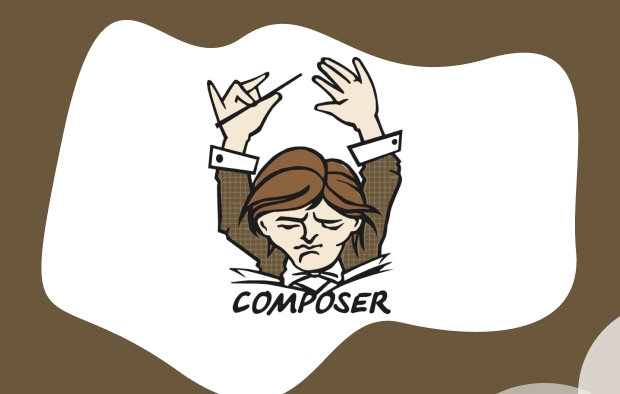How to resolve Composer dependency conflicts?
Read the error message carefully and clarify the conflicting package and its version requirements; 2. Use composer why-not to diagnose why a certain version cannot be installed; 3. Try to selectively update composer update vendor/package or update with dependencies; 4. Check the version constraints in composer.json and adjust it appropriately; 5. Clear the cache and regenerate the lock file to resolve potential cache problems; 6. Use composer prohibits to view the direct reasons for preventing specific versions from being installed.

Resolving Composer dependency conflicts can be tricky, but it's usually straightforward once you understand how Composer works and what tools it provides. Here's how to tackle them effectively:

1. Read the Error Message Carefully
Composer gives detailed output when conflicts occur — don't skip this! It typically tells you:
- Which packages require conflicting versions
- What versions they expect
- What's currently installed or available
Example:

Problem 1
- Root composer.json requires php ^8.1 but your php version is 8.0.28.
Problem 2
- package-a v1.2 requires package-b ^2.0 -> found package-b[v2.0, v2.1]
- package-c v3.0 requires package-b ^1.5 -> conflictThis tells you exactly where the incompatibility lies.
2. Use composer why-not to Diagnose
If you're unsure why a package isn't installing or why a version isn't allowed:

composer why-not vendor/package:version
This shows which other packages are blocking that version — super useful for debugging.
3. Try Updating Selectively
Instead of running composer update (which updates everything and may worsen conflicts), try:
composer update vendor/package
This updates only the problematic package and its dependencies, minimizing side effects.
If that doesn't work, try:
composer update --with-dependencies vendor/package
This also updates dependencies of the target package, which might resolve nested conflicts.
4. Check for Version Constraints in composer.json
Look at your own require section:
"require": {
"vendor/package-a": "^1.2",
"vendor/package-b": "^3.0"
} Sometimes loosening or tightening version constraints (eg, from ^1.2 to ~1.2.0 or ^1.2.3 ) helps Composer find a compatible path. But be cautious — test thoroughly after changing constraints.
Also, avoid overly strict constraints like 1.2.3 unless necessary — they make future updates harder.
5. Clear Cache and Regenerate Lock File (if needed)
Sometimes stale cache or a corrupted composer.lock causes issues:
composer clear-cache rm composer.lock composer install
⚠️ Only do this in development — it may change versions in production if not managed carefully.
6. Ask for Help with composer prohibits
To see what's preventing a specific version from being installed:
composer prohibits vendor/package:version
This is like why-not , but often more precision — it shows direct blockers.
Bonus Tips:
- Keep dependencies updated regularly — small conflicts are easier to fix than big ones.
- Use
composer showto see what's installed and their versions. - If stuck, check the package's GitHub issues — others may have hit the same wall.
- Consider using
composer require vendor/package --update-with-dependencieswhen adding new packages.
Resolving conflicts is mostly about understanding the chain of requirements and using the right diagnostic tools. It's not always instant, but with these steps, you'll usually get there without tearing your hair out.
The above is the detailed content of How to resolve Composer dependency conflicts?. For more information, please follow other related articles on the PHP Chinese website!

Hot AI Tools

Undress AI Tool
Undress images for free

Undresser.AI Undress
AI-powered app for creating realistic nude photos

AI Clothes Remover
Online AI tool for removing clothes from photos.

Clothoff.io
AI clothes remover

Video Face Swap
Swap faces in any video effortlessly with our completely free AI face swap tool!

Hot Article

Hot Tools

Notepad++7.3.1
Easy-to-use and free code editor

SublimeText3 Chinese version
Chinese version, very easy to use

Zend Studio 13.0.1
Powerful PHP integrated development environment

Dreamweaver CS6
Visual web development tools

SublimeText3 Mac version
God-level code editing software (SublimeText3)

Hot Topics
 Laravel Introduction Example
Apr 18, 2025 pm 12:45 PM
Laravel Introduction Example
Apr 18, 2025 pm 12:45 PM
Laravel is a PHP framework for easy building of web applications. It provides a range of powerful features including: Installation: Install the Laravel CLI globally with Composer and create applications in the project directory. Routing: Define the relationship between the URL and the handler in routes/web.php. View: Create a view in resources/views to render the application's interface. Database Integration: Provides out-of-the-box integration with databases such as MySQL and uses migration to create and modify tables. Model and Controller: The model represents the database entity and the controller processes HTTP requests.
 How to view the version number of laravel? How to view the version number of laravel
Apr 18, 2025 pm 01:00 PM
How to view the version number of laravel? How to view the version number of laravel
Apr 18, 2025 pm 01:00 PM
The Laravel framework has built-in methods to easily view its version number to meet the different needs of developers. This article will explore these methods, including using the Composer command line tool, accessing .env files, or obtaining version information through PHP code. These methods are essential for maintaining and managing versioning of Laravel applications.
 laravel installation code
Apr 18, 2025 pm 12:30 PM
laravel installation code
Apr 18, 2025 pm 12:30 PM
To install Laravel, follow these steps in sequence: Install Composer (for macOS/Linux and Windows) Install Laravel Installer Create a new project Start Service Access Application (URL: http://127.0.0.1:8000) Set up the database connection (if required)
 Laravel framework installation method
Apr 18, 2025 pm 12:54 PM
Laravel framework installation method
Apr 18, 2025 pm 12:54 PM
Article summary: This article provides detailed step-by-step instructions to guide readers on how to easily install the Laravel framework. Laravel is a powerful PHP framework that speeds up the development process of web applications. This tutorial covers the installation process from system requirements to configuring databases and setting up routing. By following these steps, readers can quickly and efficiently lay a solid foundation for their Laravel project.
 Recommended Laravel's best expansion packs: 2024 essential tools
Apr 30, 2025 pm 02:18 PM
Recommended Laravel's best expansion packs: 2024 essential tools
Apr 30, 2025 pm 02:18 PM
The essential Laravel extension packages for 2024 include: 1. LaravelDebugbar, used to monitor and debug code; 2. LaravelTelescope, providing detailed application monitoring; 3. LaravelHorizon, managing Redis queue tasks. These expansion packs can improve development efficiency and application performance.
 What is the difference between php framework laravel and yii
Apr 30, 2025 pm 02:24 PM
What is the difference between php framework laravel and yii
Apr 30, 2025 pm 02:24 PM
The main differences between Laravel and Yii are design concepts, functional characteristics and usage scenarios. 1.Laravel focuses on the simplicity and pleasure of development, and provides rich functions such as EloquentORM and Artisan tools, suitable for rapid development and beginners. 2.Yii emphasizes performance and efficiency, is suitable for high-load applications, and provides efficient ActiveRecord and cache systems, but has a steep learning curve.
 Laravel environment construction and basic configuration (Windows/Mac/Linux)
Apr 30, 2025 pm 02:27 PM
Laravel environment construction and basic configuration (Windows/Mac/Linux)
Apr 30, 2025 pm 02:27 PM
The steps to build a Laravel environment on different operating systems are as follows: 1.Windows: Use XAMPP to install PHP and Composer, configure environment variables, and install Laravel. 2.Mac: Use Homebrew to install PHP and Composer and install Laravel. 3.Linux: Use Ubuntu to update the system, install PHP and Composer, and install Laravel. The specific commands and paths of each system are different, but the core steps are consistent to ensure the smooth construction of the Laravel development environment.
 Laravel logs and error monitoring: Sentry and Bugsnag integration
Apr 30, 2025 pm 02:39 PM
Laravel logs and error monitoring: Sentry and Bugsnag integration
Apr 30, 2025 pm 02:39 PM
Integrating Sentry and Bugsnag in Laravel can improve application stability and performance. 1. Add SentrySDK in composer.json. 2. Add Sentry service provider in config/app.php. 3. Configure SentryDSN in the .env file. 4. Add Sentry error report in App\Exceptions\Handler.php. 5. Use Sentry to catch and report exceptions and add additional context information. 6. Add Bugsnag error report in App\Exceptions\Handler.php. 7. Use Bugsnag monitoring







